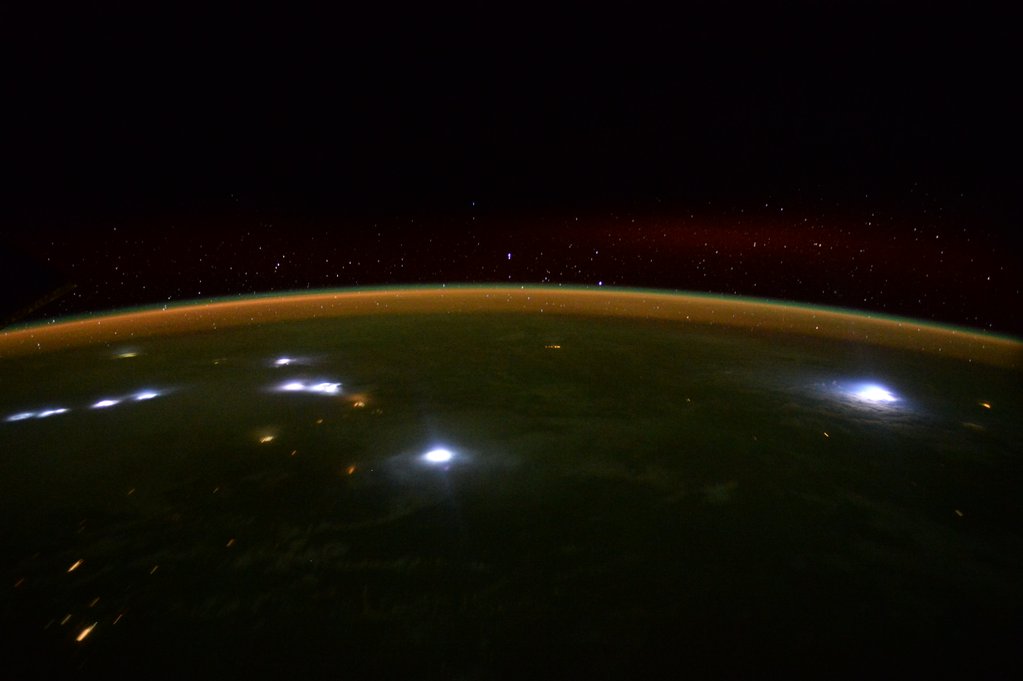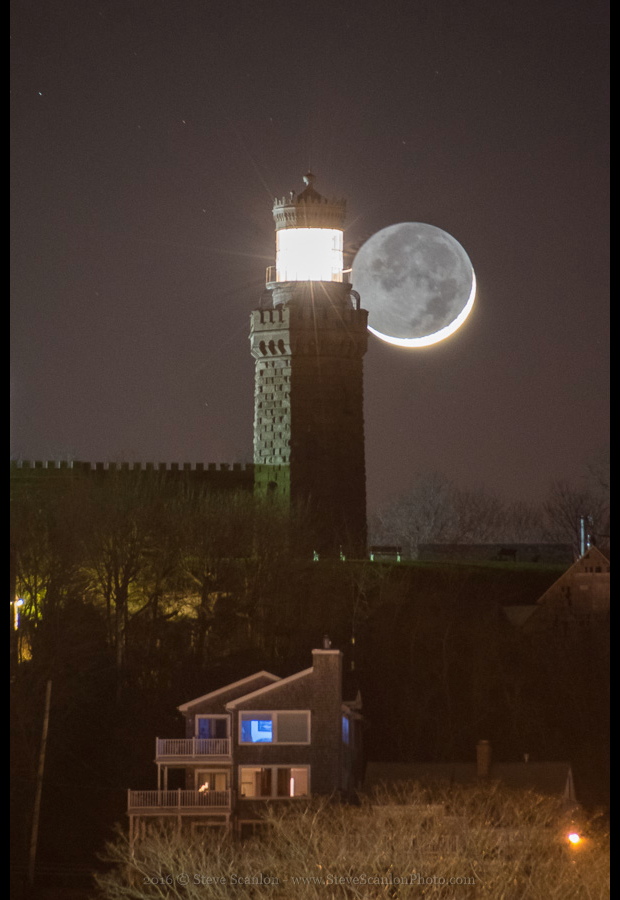Space Image of the Day Gallery (January 2016)
Lightning Strikes
Friday, Jan. 15, 2016: British European Space Agency (ESA) astronaut Tim Peake tweeted this photo of lightning over South Africa taken from the International Space Station (ISS) on Jan. 14, 2016. He wrote: "Lightning in a 2-second exposure as we flew over South Africa. Every day I see new and amazing things up here!" Peake is the first British ESA astronaut to visit the ISS. [See our Tim Peake gallery of images.]
— Tom Chao
The Moon and the Lighthouse
Monday, Jan. 18, 2016: Astrophotographer Steve Scanlon caught the setting moon over the Twin Lights lighthouse in the Navesink Highlands, New Jersey, on Jan. 11, 2016. The Twin Lights have protected ships from danger in the coastal waters of northern New Jersey since 1828.
— Tom Chao
Peake Performance
Tuesday, Jan. 19, 2016: British astronaut Tim Peake walked in space outside the International Space Station on Jan. 15, 2016. Along with NASA astronaut Tim Kopra, the two successfully replaced a failed voltage regulator that cut power to one of the station’s eight power channels in November 2015. The spacewalk ended early after Kopra discovered a small water bubble inside his helmet.
— Tom Chao
I’m in No Shape
Wednesday, Jan. 20, 2016: NGC 5408 is a galaxy located about 16 million light-years from Earth in the constellation of Centaurus (The Centaur). This galaxy, with an indefinable shape lacking a spiral or elliptical structure, is called an irregular galaxy, and about one fourth of galaxies share that title. NGC 5408’s shape led astronomers to believe that it was a planetary nebula, before determining that it was a galaxy. Also within this galaxy lies a rare object, an ultraluminous X-ray source known as NGC 5408 X-1, one of the best studied of its class. This object blasts out vast amounts of energetic X-rays.
— Tom Chao
Hide the Star
Thursday, Jan. 21, 2016: Astrophotographer Laura Austin caught the moon's occultation of the star Aldebaran, on Jan. 19, 2016, from her backyard in Sarnia, Ontario, Canada. She writes in an email to Space.com: “It was cold, but thrilling seeing the bright star Aldebaran and the moon in my telescope lens at the same time.”
— Tom Chao
The Shape I’m In
Friday, Jan. 22, 2016: Cassini spacecraft’s narrow-angle camera caught Saturn’s moons Tethys (brighter) and Janus (darker) on Oct. 27, 2015. The marked difference in their shapes is explained by a simple fact. Moons like Tethys (660 miles or 1,062 kilometers across) possess enough gravity to pull their material into spherical shapes. Small moons like Janus (111 miles or 179 kilometers across) do not have enough mass for gravity to form them into a sphere. Cassini obtained the view at a distance of approximately 593,000 miles (955,000 kilometers) from Janus. Saturn’s narrow F ring and the outer edge of the A ring also appear.
— Tom Chao
A Redder Shade of Pale
Monday, Jan. 25, 2016: The Danish 1.54-metre telescope stands at ESO's La Silla Observatory on the outskirts of the Chilean Atacama Desert. To the right of the telescope’s dome, the Southern Cross constellation shines, while at the lower right of the image, two bright stars glow: Alpha (right) and Beta Centauri. A third star in the multiple star system, Proxima Centauri, is a red dwarf not visible to the naked eye which may possess a small orbiting planet. The Pale Red Dot campaign, started in January 2016, will search for this orbiting companion by looking for wobbles in the dwarf star’s motion.
— Tom Chao
Breaking space news, the latest updates on rocket launches, skywatching events and more!
Here Come the Radio Jets
Tuesday, Jan. 26, 2016: Galaxy LO95 0313-192 (left) lies about one billion light-years away in the constellation of Eridanus. Seen edge-on, this galaxy possesses a spiral shape similar to the Milky Way, with a large central bulge, and arms of glowing gas marked by dark dust lanes. In 2003, astronomers made the surprising discovery that LO95 0313-192 has intense radio jets spewing from its center. In an even more rare instance, the galaxy also appears to contain two more regions strongly emitting in the radio portion of the spectrum. The discovery in recent years of three more spiral galaxies containing radio-emitting jets raises questions about how galaxies produce jets, and how they fling out into the cosmos. (The companion galaxy at right is [LOY2001] J031549.8-190623.) Image released Jan. 25, 2016.
— Tom Chao
The Planets
Wednesday, Jan. 27, 2016: Astrophotographer Stan Honda sent in a panoramic image of five planets in the night sky. He writes in an email message to Space.com: "The five planets were visible in the pre-dawn hours of Jan. 25 [2016] from Central Park in New York. Mercury just visible before the sky brightened. This is a five-frame panorama, taking in a view of over 120 degrees from Mercury to Jupiter." The view faces south over the Central Park Reservoir. The tall building at center is a residential tower at 432 Park Avenue.
— Tom Chao
My Corona
Thursday, Jan. 28, 2016: Astrophotographer Mia Stålnacke sent in a photo of an auroral display alongside the moon on Jan. 23, 2016. She writes in an email message to Space.com: “Last night the sky absolutely exploded over Kiruna, Sweden. It only lasted for about 30 minutes but was incredibly bright, fast moving and intense. I managed to get this photo of a corona forming right next to the nearly full moon.” In an auroral corona, rays of the aurora seem to emerge from a single point, owing to perspective.
— Tom Chao











